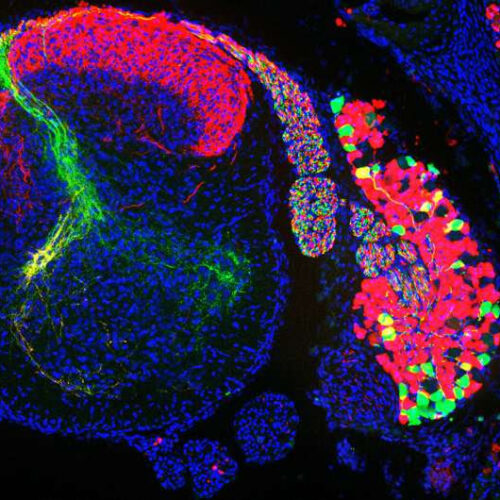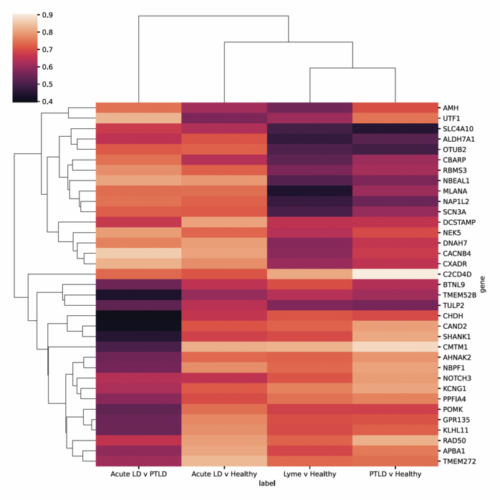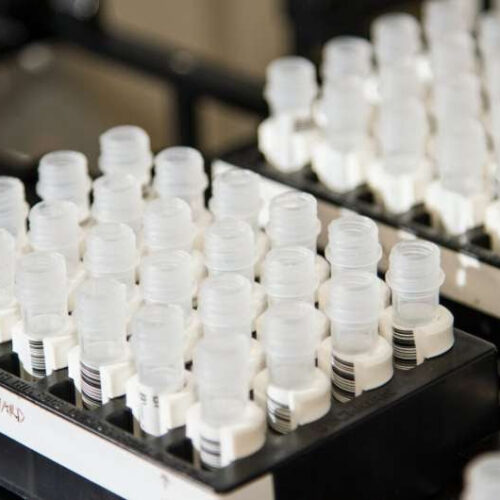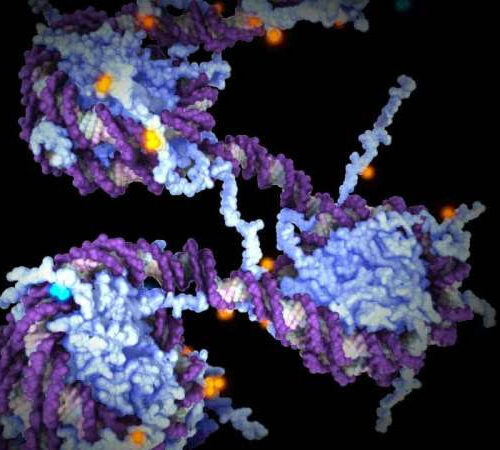by Anke Brodmerkel, Max Delbrück Center for Molecular Medicine Different populations of sensory neurons cell bodies in a dorsal root ganglion (right) and their axons in the spinal cord (left): The cells in green detect proprioceptive information while the cells in red thermal and tactile information. Credit: Stephan Dietrich, Zampieri Lab, Max Delbrück Center To perform...
Tag: <span>Genes</span>
Genes to potentially diagnose long-term Lyme disease identified
THE MOUNT SINAI HOSPITAL / MOUNT SINAI SCHOOL OF MEDICINE IMAGE: RESEARCHERS AT ICAHN MOUNT SINAI IN NEW YORK IDENTIFIED 35 GENES THAT COULD BE USED AS BIOMARKERS TO POTENTIALLY DIAGNOSE PATIENTS WITH LONG-TERM LYME DISEASE (LTLD). THE FINDINGS MAY ALSO LEAD TO NEW THERAPEUTIC TARGETS FOR THE HARD-TO-DIAGNOSE DISEASE WITH LIMITED TREATMENT OPTIONS. THE...
How genetics influences our body weight beyond genes
by Fabio Bergamin, ETH Zurich The role of miR-7 in Sim1 neurons to regulate mammalian energy homeostasis and neuroendocrine function. In mice, hypothalamic expression of miR-7 is regulated by metabolic state. In humans, variants in the locus encompassing miR-7 are associated with reduced expression of HNRNPK/MIR-7-1. miR-7 regulates the expression of the noncoding RNAs Cyrano...
Study identifies new dementia risk genes through novel testing approach
by University of California, Los Angeles Credit: Unsplash/CC0 Public Domain A new UCLA-led study has identified multiple new risk genes for Alzheimer’s disease and a rare, related brain disorder called progressive supranuclear palsy (PSP) by using a combination of new testing methods allowing for mass screening of genetic variants in a single experiment. The study, published...
Not all in the genes: Are we inheriting more than we think?
by Walter and Eliza Hall Institute Epigenetic tags (orange and blue) on inactive DNA. Researchers say epigenetic tags could be passed onto offspring more often than previously thought. Credit: Still from WEHI.TV’s animation “X Inactivation and Epigenetics” by Etsuko Uno A fundamental discovery about a driver of healthy development in embryos could rewrite our understanding of...
Study connects shorter course of antibiotics to fewer antibiotic resistance genes
AMERICAN SOCIETY FOR MICROBIOLOGY Washington, DC – March 24, 2022 – Antibiotic resistance is a growing problem worldwide that threatens the efficacy of available treatments and can lead to extended hospital stays and increased mortality. Researchers have long sought ways to address the problem. Given that antibiotic use fuels resistance, reducing antibiotic use offers an appealing...
Scientists found genes, which could be linked to longevity in humans
There’s never going to be some kind of a magical potion that makes you live longer. However, scientists are looking at all the ways that could increase the lifespan and maybe solve aging. Every little piece of that puzzle matters. For example, there are genes that have been previously found to make fruit flies live...
How our genes influence our gut health
by Baker Heart and Diabetes Institute Illustration of bacteria in the human gut. Credit: Darryl Leja, National Human Genome Research Institute, National Institutes of Health A new study published today in Nature Genetics provides a powerful and comprehensive insight into the influence of our genes on our gut health and their role in shaping our gut microbiota....
New research links genes to a longer human lifespan
by University College London Credit: Pixabay/CC0 Public Domain A group of genes that play an essential role in building components of our cells can also impact human lifespan, finds a new study led by UCL researchers. The genes have previously been found to extend lifespan in small organisms, such as making fruit flies live 10%...
Researchers identify genes at play in people with osteoarthritis
NORWEGIAN UNIVERSITY OF SCIENCE AND TECHNOLOGY Osteoarthritis is the leading cause of pain and disability worldwide. There is no cure, only pain relief. Patients’ joints become inflamed, and they feel creaky and stiff in the morning. Some people use painkillers and exercise as treatment. Others have to resort to surgery and prostheses. About 300 million people...







